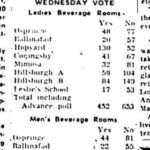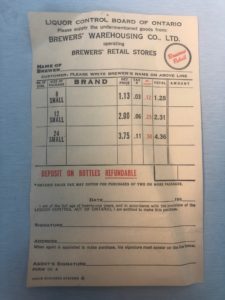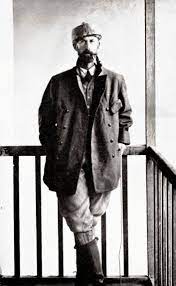 2023!! Here we are knee deep in it already. And my first packets of seeds have already shown up. Dreaming of a feed of that Italian cuke-a-melon, the carosello, is all I’m about now. Let’s be honest – I’m calling this part of the year pre-spring from here on out. Summer, autumn, holidays, pre-spring, spring. Makes way more sense that way. If winter sucks, just eliminate it from the vocabulary. That’s what I say. You. Are. Welcome. Not sure if a new beery theme has coalesced yet this year – other than, you know, the impending total craft beer industry collapse. Things looked a bit wobbly recession-wise in Montreal what with shops closed or quiet, there where we ended up by surprise last week, gifted a short trip by the kids – but I did get to try that there cider without sulfates, at the very busy (good to see) mid-week early dinner sitting at “Au Pied du Cochon” (also really good to scoff.) You never realize how much sulphites trigger histamine flairs until they don’t.
2023!! Here we are knee deep in it already. And my first packets of seeds have already shown up. Dreaming of a feed of that Italian cuke-a-melon, the carosello, is all I’m about now. Let’s be honest – I’m calling this part of the year pre-spring from here on out. Summer, autumn, holidays, pre-spring, spring. Makes way more sense that way. If winter sucks, just eliminate it from the vocabulary. That’s what I say. You. Are. Welcome. Not sure if a new beery theme has coalesced yet this year – other than, you know, the impending total craft beer industry collapse. Things looked a bit wobbly recession-wise in Montreal what with shops closed or quiet, there where we ended up by surprise last week, gifted a short trip by the kids – but I did get to try that there cider without sulfates, at the very busy (good to see) mid-week early dinner sitting at “Au Pied du Cochon” (also really good to scoff.) You never realize how much sulphites trigger histamine flairs until they don’t.
First up this week? Some history for you upon the question of peeing. There is an odd whiff of Ceramics Defense League (CDL) punditry in this article about the use of tiles in pubs in 1930s Australia:
…the emerging awareness of sanitation and hygiene prompted the wider use of tiles as a way to manage germs and dirt. Tiles were easier to clean than plaster and wood. They were also more durable and colourful than traditional materials. These days, the popular imagination might associate pub tiles with piss and vomit, even if the architectural move was more about general hygiene than the dangers of the six o’clock swill. Certainly, a pub with wall tiles was easy to clean, and breweries were keen to play-up the sparkling modernity of tiled bars.
I say “off” as somewhere around here I have a picture of a saloon of the pre-prohibition sort with a urinal trough at the foot of the bar. Or just a mopping out trough… or whatever. Stop kidding yourselves. They were horrible places and you’d all be pro-Temperance, yes you, right there tambourines in hand shouting your favorite Bible verses, if you woke up in the 1890s living next to one, you moderns you. ‘Fess up! One of the oddest thing about the bad old days is that constant desire to polish them up. (Surely great great grandpa wasn’t that sort of pig. He was?!?!)
Continuing of the question of health, I am not sure I need a non-alcohol based route to tickling the old gaba receptors… but someone is working on just that, according to The Times:
Nutt’s idea was simple: target just the gaba, and do so by engineering a molecule that removes itself from the body rapidly and painlessly. By only hitting that one type of receptor, it would avoid some of less desirable effects of alcohol intoxication. By being easily metabolised, it would avoid the less desirable after-effects of that intoxication: a hangover. The result is a substance he calls Alcarelle.
Speaking of technology… consider this and what we have lost. Especially shouting “pick up the phone” to someone else in your house. Best beer marketing campaign ever as far as I’m concerned or at least up there is Beer is Best.
Robin and Jordan are back with a fresh podcast for the New Year with some surprising info on changes in the Ontario brewing scene – including, among other sad recession related news, the end of brewing operations Collective Arts’ Toronto location and the resulting considerations of the ability to run a local semi-autonomous branch with its own life when you are slowly becoming a semi-regional slightly international craft operation during a downturn.
 And Martin has shared his New Years Eve in Manchester, picking up the kid with the job. Lovely photos of a ceiling at the Crown & Kettle. “Lordly” ye shall say when ye click on yon thumbprint and look upon the said ceiling yourselves. And, yea, it shall be true.
And Martin has shared his New Years Eve in Manchester, picking up the kid with the job. Lovely photos of a ceiling at the Crown & Kettle. “Lordly” ye shall say when ye click on yon thumbprint and look upon the said ceiling yourselves. And, yea, it shall be true.
BREAKING: through his study of stouts, Ron has trampled upon the tender hearts of style obsessives:
These are brew house names. Not what the beer was necessarily sold as. Some brewing records have four beer names across the top, but there’s only really one beer.
Is any of the past true? Is the present? Consider this the* curious tale… of… oh dear… let Stonch explain a bit of the background first:
Curious Brew is grim: a fake, deceptive brand for a decade, then Chapel Down build a white elephant brewery, but soon panic and sell for buttons to a crank. Now they’ll brew Wild Beer ‘brands’ in Ashford. Who cares? I wouldn’t touch any of it. I care about real, honest breweries.
Well, it did sorta get touched but not it seems embraced according to Beeson, J.:
@WildBeerCo brand survives, sold to @CuriousBrewery. Sale includes IP, beer & e-comm biz, but not physical brewery. Some staff inc. Cooper & Ellis staying on. Limited co remains in administration. Investors won’t receive £££ from deal.
So recipes and the website. The shaking out of the pockets of the departed it seems. Not a buy out, just part of the yard sale. And, speaking of buying junk, it’s all like a mini-version of the 1990’s Filipino Pepsi fiasco but still seems a bit of a pile on… even, you know, for himself of themselves:
Mr Watt said that because it was his error, he had contacted all 50 gold can winners to offer them the “full cash amount” as an alternative to the prize if they were unhappy”. “All in all, it ended up costing me around £470,000 – well over 2 and a half years’ salary,” he added. In his post, the Brewdog boss revealed he now owned 40 of the gold cans. After conducting its investigation, the ASA said it received 25 complaints in relation to three social media adverts stating its can prize was made from “solid gold”.
Elsewhere, Boak and Bailey posted a very interesting and very very true article on the 1955 launch party of The Venetian Coffee Bar, a Whitbread project:
The Venetian Coffee Bar got an entire feature in Whitbread’s in-house magazine, The House of Whitbread, in spring 1956. The article gives us a few details that weren’t in the newspaper reports, including the specific date of the launch party – 6 December 1955. The photos of the launch party are slightly more interesting than usual, too. They show the famously hammy British horror actor Tod Slaughter in attendance, dressed in fine Victorian style, shortly before his death in February 1956.
Tod Slaughter! Note: there are two types of people in beer: people who are capable of honest critical reporting on obvious things** and those unable to admit to external reality.*** Andy is also of the first class:
At its best, hazy IPA is reasonably pleasant, sometimes even enjoyable. At anything less than its best, the experience drops quickly. While beer drinking is a subjective experience, feels like many hazy brewers are engaged in an extended gag no one has bothered to call them on.
Let us join hands in a big harmonious circle right now and promise 2023 is the year we stop finger wagging about saying bad things about bad styles and bad beer and just get to speaking some truths about it all. Thanks.
Pellicle has published a travel piece by Rachel Signer (because a big percentage of drinks writing is now really travel pr0n when it isn’t now really well justified social justice writing) which is not the sort of thing I usually like but I do like it very much in this case because it is a well written airy study on being in France and Italy in the spring drinking sulphate-free wine (noted above as something I should explore) and because I am (as noted above) already working on my own “pots and pots of carosello” gardening plans which means I can’t resist… a chicken festival:
We arrive to the chicken festival. It is outdoors, with a string of lights around a café area. Everyone is greeting each other warmly. People who missed coming here for two years have come out in droves, and all the chicken has already been eaten. We have fried potatoes and sausages instead, and we drink a pleasant local red wine, made with the generic Toscana appellation. I feel incredibly at home with the Pācina folks, although we hardly know each other. But there is between us the bond of natural wine, which runs strong around the world. And, perhaps relatedly, a relief that history didn’t go the other way, and that we can talk of fascism as a thing in history.
Well, err, you may want to check on that last bit. Speaking of travel, Alistair shifted himself a whole 7.2 miles as he prepared his thoughts on the subject of one particular local of his that is for the locals:
It was on my Christmas Eve trip to Patch that I was stood at the bar, there was basically no one there other than myself, my neighbour, and the general manager, who was tending the bar that day. I’ve know the GM for quite some time now, initially through the local homebrew club, but also as he has been in the beer industry for the best part of a decade I think at this point. The rest of the bar staff know me as a pilsner drinker, and Erik’s Pylon Pilsner is definitely my most regular tipple at Patch, but the GM knew what I was there for, their “copper ale”, which in my mind treads a fine line between dark mild and the kind of darker best bitter you get in the south of England.
Finally, is it true that Mastodon is not taking off as still Twitter slowly continues to decline, acting more and more like Web 1.0 tickertape? Perhaps the curse of social media has been broken and – oh happy day! – people are now just becoming actually happier in the real world! Wouldn’t that be nice. And so, relatedly in its finality, we come to the credits. Or sorta like the credits. What song should play if this were a movie and you were there scrolling though my continuing tradition (inspired by Boak and Bailey… not stolen from… let’s be clear!) of slowly building upon a shared list of beer writing resources on Mastodon followed by the podcasts? This? Is that the tune? Sure… maybe just for this week…
Boak & Bailey | The B² experience
David Jesudason | “Desi Pubs” (2023) author
Ron Pattinson | The RonAlongAThon Himself
Al Reece AKA Velky Al | Fuggled
Jennifer Jordan | US hops historian
Alan McLeod | A Good Beer Blog (… me…)
Andreas Krennmair | Vienna beer and lager historian
Beer Ladies Podcast | Lisa Grimm and colleagues
Jay Brooks | Brookston Beer Bulletin
Joe Stange | Belgian beer expert, beer magazine editor
Cider Bar | Barry makes Kertelreiter cider
Laura Hadland | CAMRA historian and beer writer
Brian Alberts | US beer historian
Jon Abernathy | The Beer Site
Maureen Ogle | US Beer Historian
Lars Garshol | Norwegian Beer Historian and Kveik Hunter
Carla Jean | MAINER!!!
Thandi Guilherme | Beer Ladies Podcast Co-host
Lisa Grimm | Beer Ladies Podcast Co-host
Rob Talksbeer | Podcaster and Youtuber
Anthony Gladman | UK Drinks Writer
Jeff Alworth | Manna Of Beervana
Evan Rail | Prague based GBH editor, freelance writer, NYT etc.
Go have a look. And also check for more as the year picks up from Boak and Bailey every Saturday and Stan back at his spot on Mondays. It’s no longer the holidays. So, look around and check to see if there is the highly recommended Beer Ladies Podcast. The OCBG Podcast is on a very quiet schedule these days – but it there again! See also sometimes, on a Friday, posts at The Fizz as well (Ed.: we are told ‘tis gone to 404 bloggy podcast heaven… gone to the 404 bloggy podcast farm to play with other puppies.) And the long standing Beervana podcast but it might be on a month off (Ed.: which I have missed from this list for some unknown reason.) There is the Boys Are From Märzen podcast too and check out the travel vids at Ontario’s own A Quick Beer. There is a monthly sort of round up at The Glass. (Ed.: that seems to be dead now… nope, there was a post on July 25th… in 2022 even.) There is more from DaftAboutCraft‘s podcast, too. And sign up for Katie’s (Ed.: now very) irregular newsletter, The Gulp, too. And check out the Atlantic Canada Beer Blog‘s weekly roundup. Still gearing up, the recently revived All About Beer has introduced a podcast, too. (Ed.: give it a few weeks to settle in and not be as agreeable… not sure this went very far…) Plus follow the venerable Full Pint podcast. And the Craft Beer Channel this week on Youtube. Plus Fermentation Radio with Emma Inch. The AfroBeerChick podcast as well! And also look at Brewsround and Cabin Fever. And Ben has his own podcast, Beer and Badword (Ed.: …notice of revival of which has been given… still not on the radio dial…) And remember BeerEdge, too, and The Moon Under Water. There was also the Beer O’clock Show but that’s now gone after a ten year run… no, it is back and here is the link! The Fingers Podcast has packed it in citing lack of success.
*What is less than a pun?
**To assist in your thoughts, consider what Robert Christgau wrote on the release of The Marshall Tucker Band: Greatest Hits in 1978: “I can distinguish Tucker from the other boogie bands because they favor cowboy hats, but danged if I can tell their albums apart. Country people know one cow from the next, too, but poor deracinated souls like me refuse to be bothered until A&P runs out of milk and r&r runs out of gimmicks. Toy Caldwell does write pretty good songs for a boogie man, though, about one a year to go with the album, and it’s nice to have them all in one place. Pure boogie mythos, with lots of “Ramblin'” and “Searchin’ for a Rainbow,” though I’m pleased to report that there are more miners and, yes, cowboys here than gamblers, a reassuring token of social responsibility. I recommend this album. It’s as near as you can get these days to hearing that old steam whistle.” He gave the record an -A!
***Something of the latter in last Saturday’s round up from B+B: “Don’t let someone tell you that your perceptions are incorrect because it’s all made up anyway.” It’s like a teeter-totter that sentence, isn’t it… as you go back and forth, back and forth. The passage in which it is embedded could be a valuable introduction to an anthology of beer writing in the section headed “Warning!”

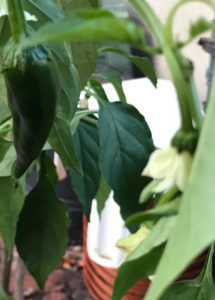



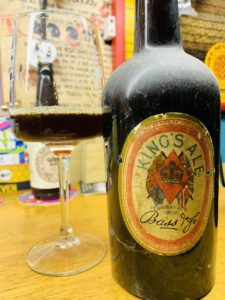 The autumn leaves are a ways off falling but the time is coming fast. We have had nothing but great grass growing weather in these parts so more with the mowing than action with the rake so far. And as we say goodbye to saying goodbye
The autumn leaves are a ways off falling but the time is coming fast. We have had nothing but great grass growing weather in these parts so more with the mowing than action with the rake so far. And as we say goodbye to saying goodbye I was thinking of what to post as an image this week, given this time of mourning for HM**** QEII. And here it is – the declaration of the passing and proclamation of the new sovereignty… in
I was thinking of what to post as an image this week, given this time of mourning for HM**** QEII. And here it is – the declaration of the passing and proclamation of the new sovereignty… in  Moving away from that news and a little bit, what has gone on out there this week? Well,
Moving away from that news and a little bit, what has gone on out there this week? Well, 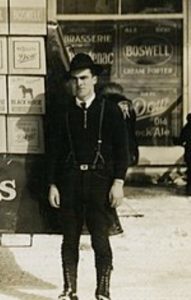 Here I am. Still on vacation but at least at home making dinners rather than forking out for them. Let’s be clear. I am not a cheap date when out and about but at the same time I do have my limits. Big city fun can hit that after a few days so nice to be back in the backyard for week two. Well, once the rain lets up. Gotta say, though, Montreal is my favorite big city even though I am
Here I am. Still on vacation but at least at home making dinners rather than forking out for them. Let’s be clear. I am not a cheap date when out and about but at the same time I do have my limits. Big city fun can hit that after a few days so nice to be back in the backyard for week two. Well, once the rain lets up. Gotta say, though, Montreal is my favorite big city even though I am  Wow. If that is you, get out. What ever it is you do. And one more thing. I hadn’t expected that this beer would be as good as it turned out to be. Glutenburg Pale Ale out of Quebec. A bit of a rarer find in the Ontario LCBO but out there if you check the inventory. Made without barley but perfectly tasty as a base beer in one’s life. Which is what it might become. Through an odd sequence of absolutely low level medical matters it turns out that I may have a degree of gluten intolerance. See, I had to have a small four stitch operation on my right eyelid, which led to an observation about how my left eye sat, which led to a couple of CT scans in nearby quieter county town hospitals which led to an ENT guy sticking a camera into my sinuses, which led to connecting the dots to a very high wisdom tooth, which led to a removal operation, which led to me having a very tiny bit of my skull removed as a door for the wisdom tooth operation. All of which left me breathing better… unless I ate bread. Hmm. Bread made me puff up a bit. All over. Unpleasantly so on rare occasions. And feel like I had hay fever. Stuffed. So I dropped bread. Clearer head. Breathing better. Had a beer. All came back. Uh oh. So I bought this beer. Didn’t come back. Hmm. I had put the feeling when having a beer down to water bulking up or general alcohol reaction but it appears to be a third aspect of the beer – the gluten. Going to keep up the experiment for a bit. All of which I mention as ungraphically as I can as a recommendation to try it yourself for a week perhaps. See, being puffed is not good. Tiny important passages restrict. Blood pressure rises. Things not ticking along optimally. Leads to other things… more serious things.
Wow. If that is you, get out. What ever it is you do. And one more thing. I hadn’t expected that this beer would be as good as it turned out to be. Glutenburg Pale Ale out of Quebec. A bit of a rarer find in the Ontario LCBO but out there if you check the inventory. Made without barley but perfectly tasty as a base beer in one’s life. Which is what it might become. Through an odd sequence of absolutely low level medical matters it turns out that I may have a degree of gluten intolerance. See, I had to have a small four stitch operation on my right eyelid, which led to an observation about how my left eye sat, which led to a couple of CT scans in nearby quieter county town hospitals which led to an ENT guy sticking a camera into my sinuses, which led to connecting the dots to a very high wisdom tooth, which led to a removal operation, which led to me having a very tiny bit of my skull removed as a door for the wisdom tooth operation. All of which left me breathing better… unless I ate bread. Hmm. Bread made me puff up a bit. All over. Unpleasantly so on rare occasions. And feel like I had hay fever. Stuffed. So I dropped bread. Clearer head. Breathing better. Had a beer. All came back. Uh oh. So I bought this beer. Didn’t come back. Hmm. I had put the feeling when having a beer down to water bulking up or general alcohol reaction but it appears to be a third aspect of the beer – the gluten. Going to keep up the experiment for a bit. All of which I mention as ungraphically as I can as a recommendation to try it yourself for a week perhaps. See, being puffed is not good. Tiny important passages restrict. Blood pressure rises. Things not ticking along optimally. Leads to other things… more serious things.

